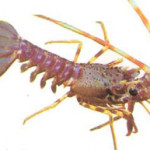
Syngnathinae
There are two species of seadragons to be found in Australian waters, the common or weedy seadragon (Phyllopteryx taeniolatus), and the leafy seadragon (Phycodurus eques).
These spectacular fish, along with seahorses, pipehorses and pipefish belong to the family Syngnathidae. Syngnathids are long, slender fish with bony plates surrounding their bodies. They have a long tubular snout and a tough solid hide and their eyes move independently of each other. They have no teeth or stomach and grow to around 30 to 50cm. The weedy seadragon is the only seadragon species confirmed to be found in Tasmania.
The leafy seadragon is usually green gold and orange with appendages that look like leaves (great for camouflage) and is generally more ornate than the weedy seadragon.
The weedy seadragon has a longer thinner snout than the leafy seadragon. Adults grow to about 50 cm in length and are usually reddish with yellow spots and purple-blue bars. Small leaf-like appendages occur singularly or in pairs along the body. A few short spines also occur along the body. Compared to the female, a male weedy has a shallow body width and is generally darker.
Both species love the kelp covered reefs and tidal inshore areas of seagrass, feeding mainly on crustaceans such as mysids and mysid shrimps (sea lice). Seadragons are born looking like the adult version just smaller and are instantly independent of both parents.
They are not easy to spot with their natural camouflage, but these unusual fish are well worth the search.








Social Profiles